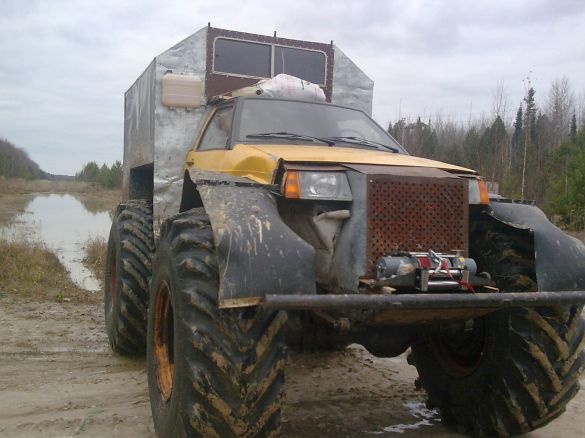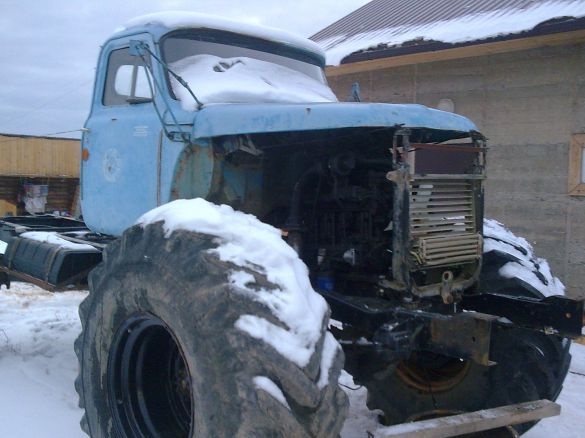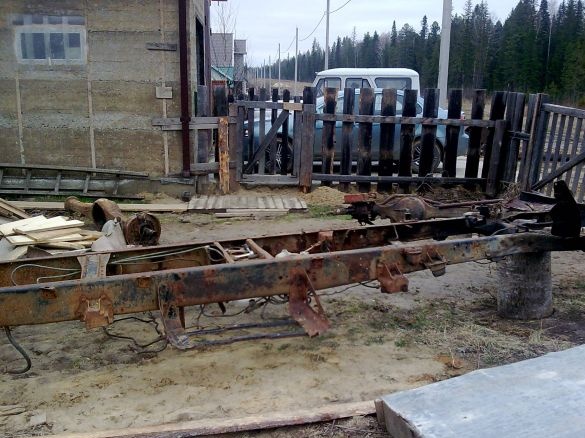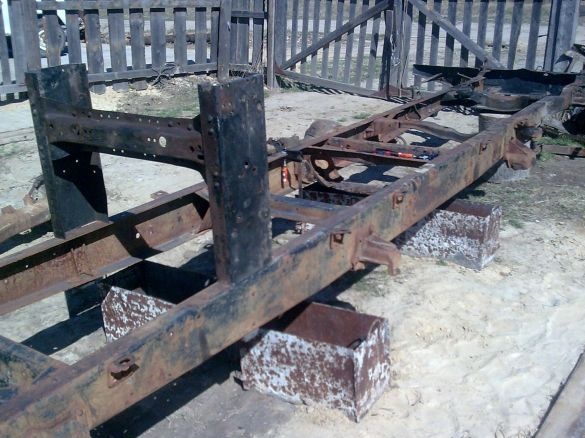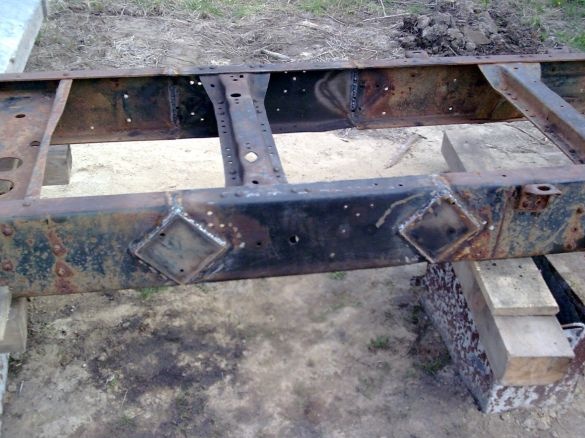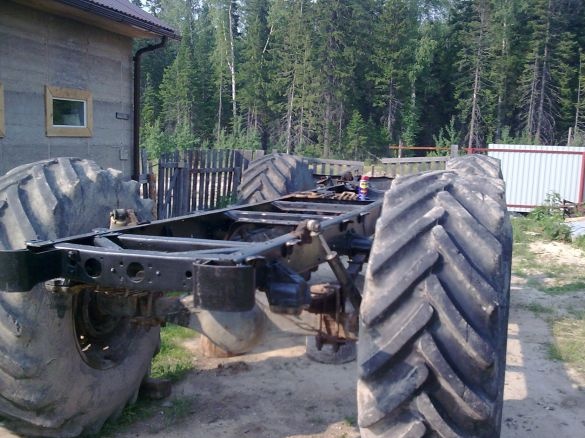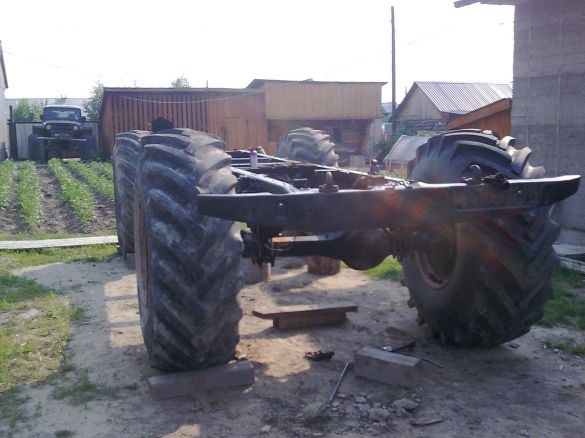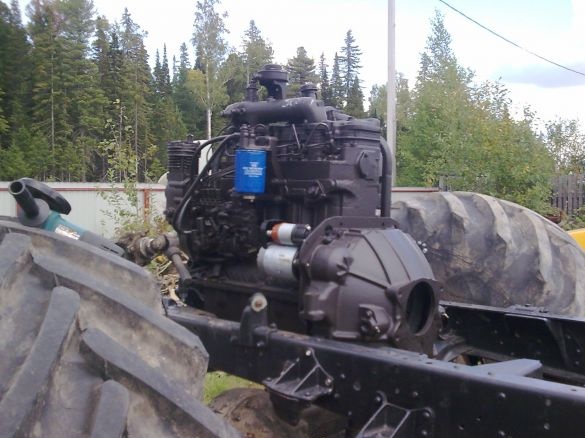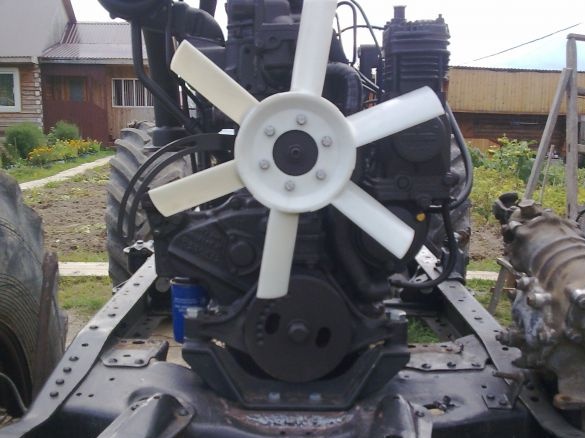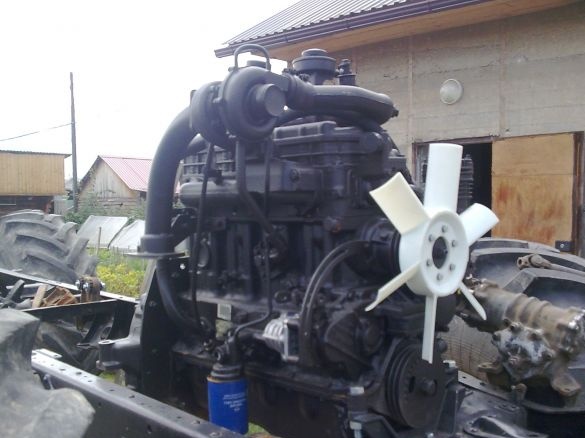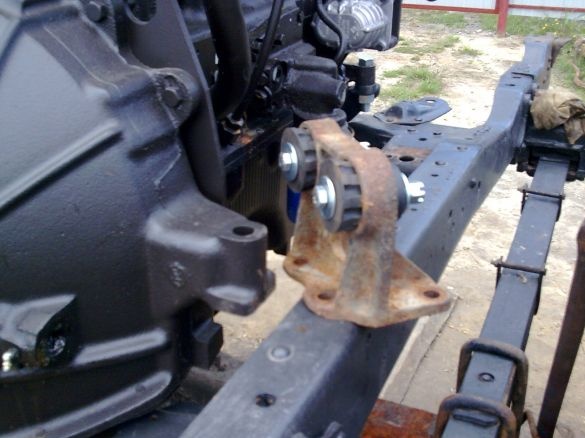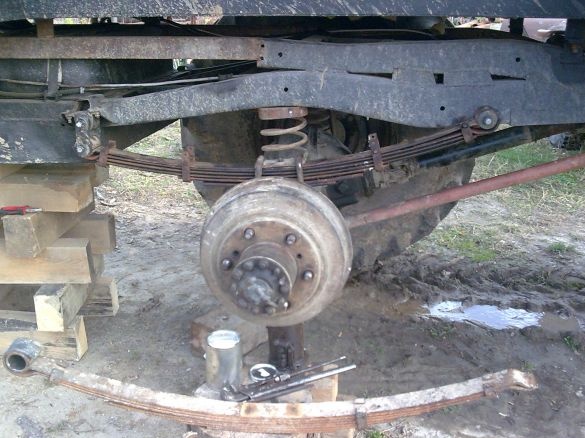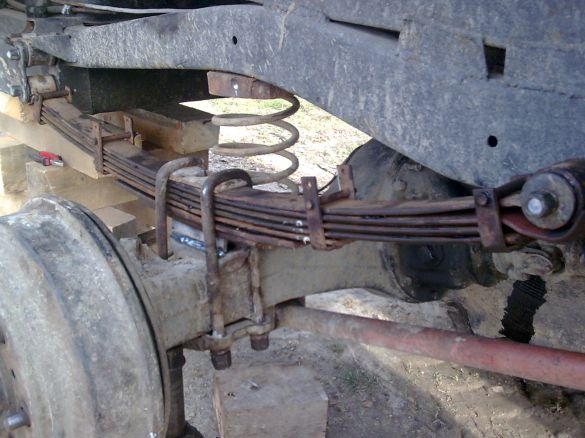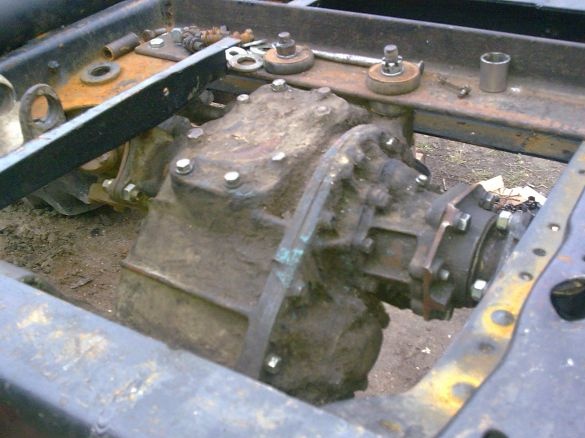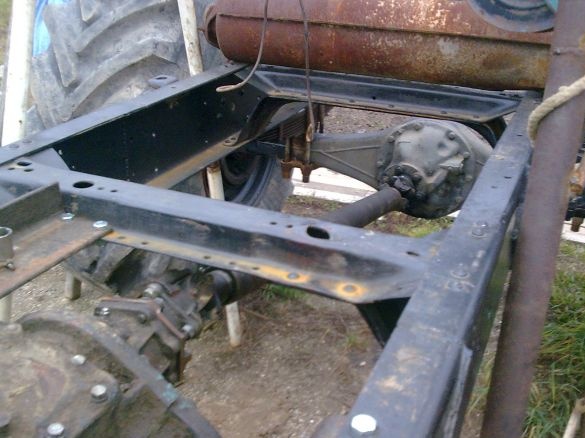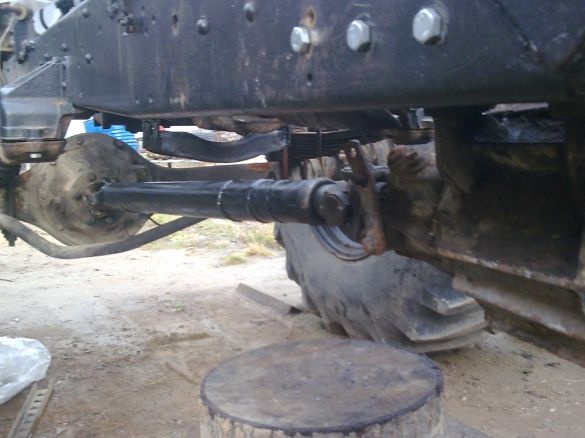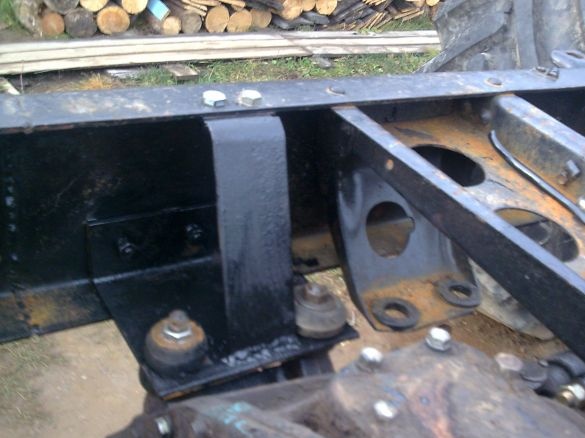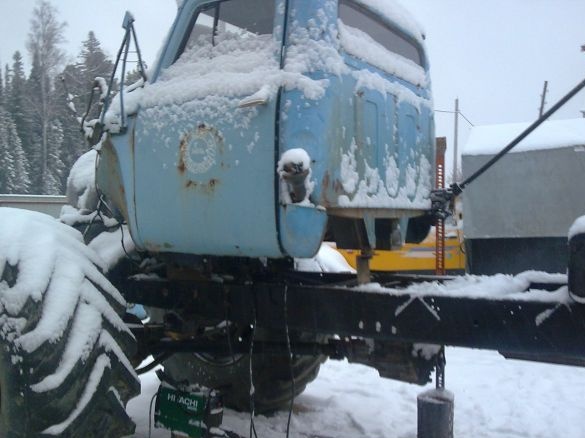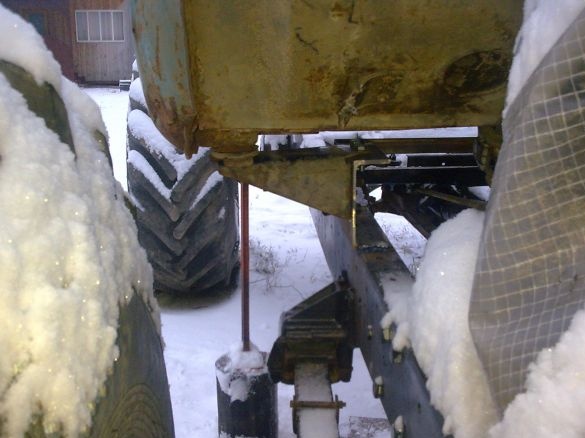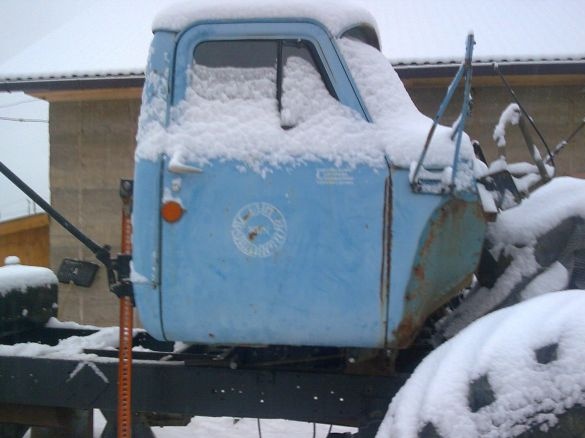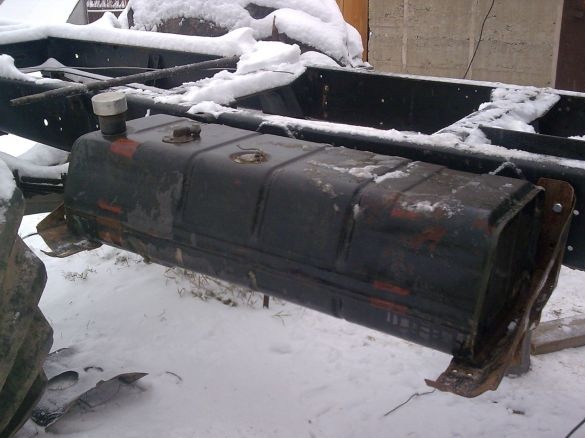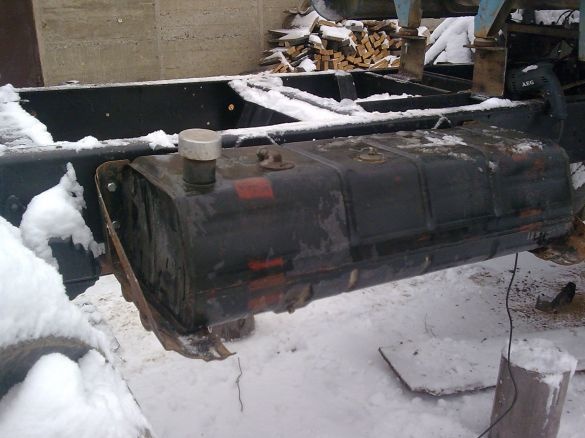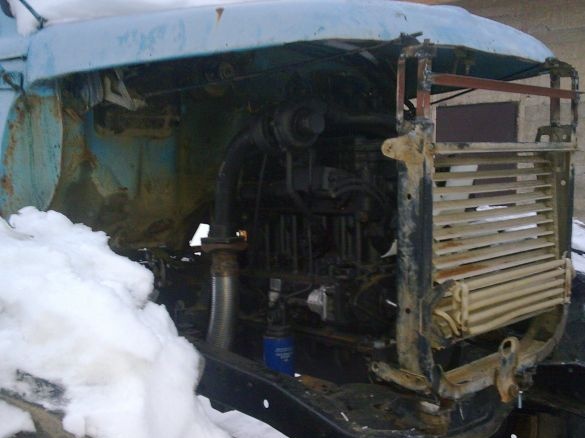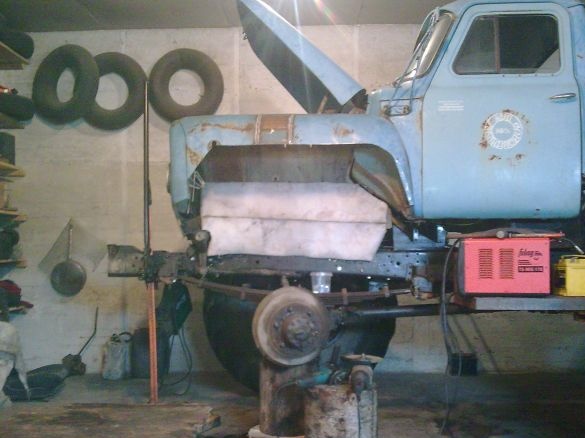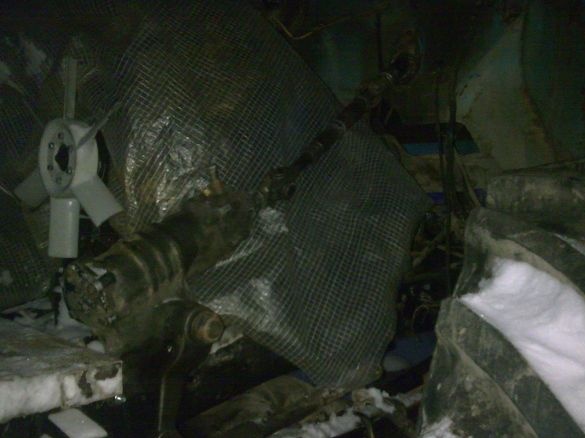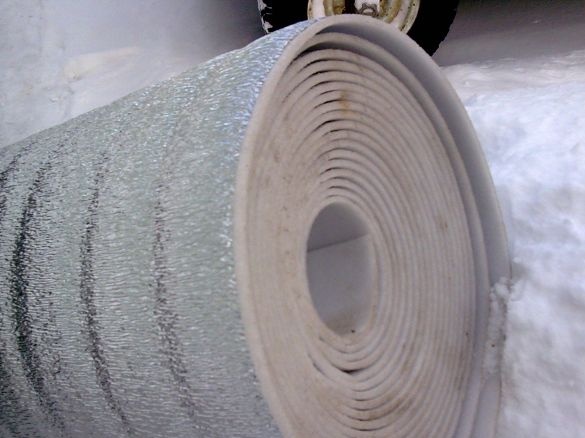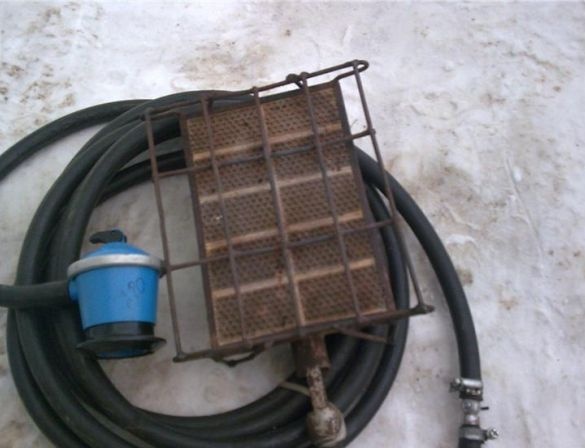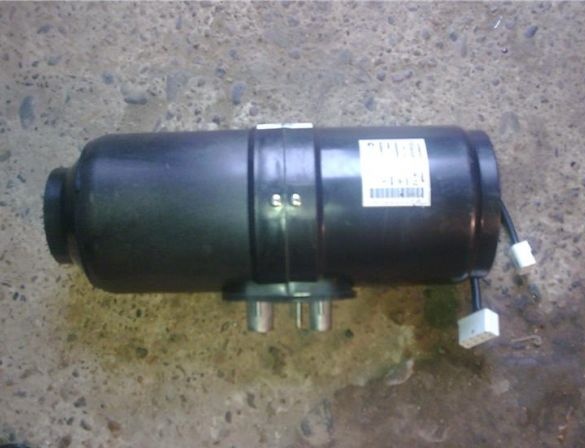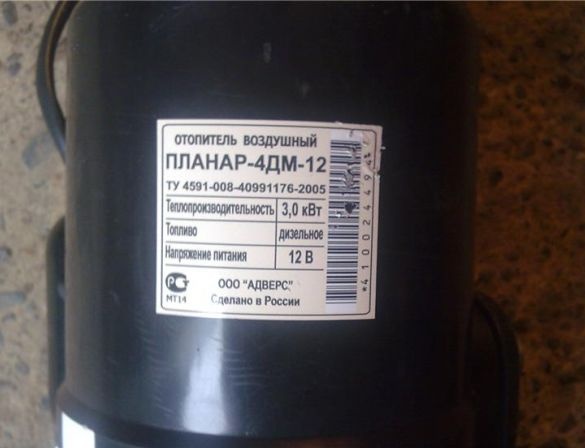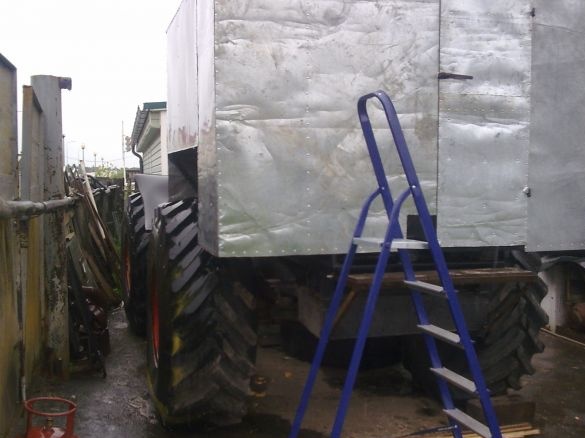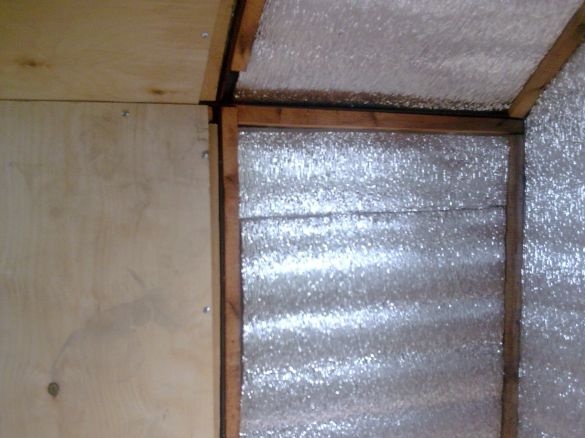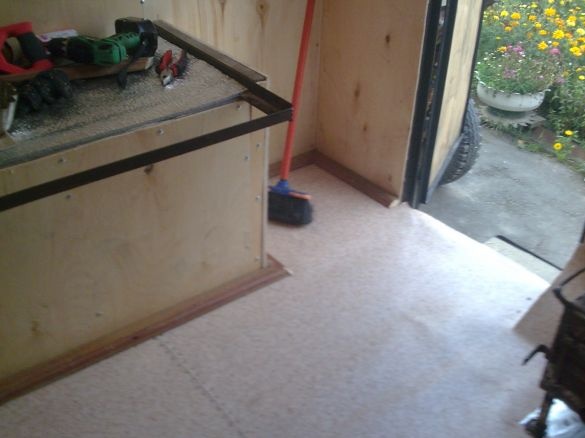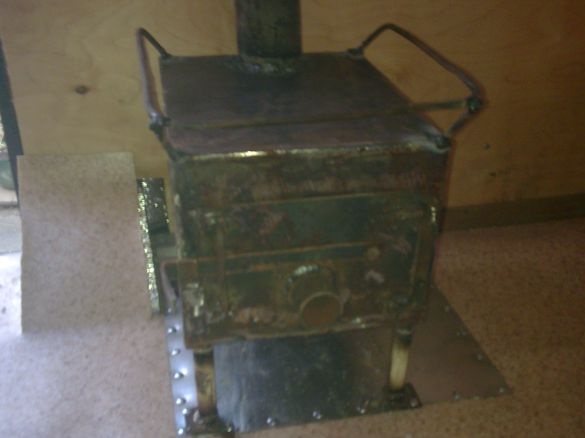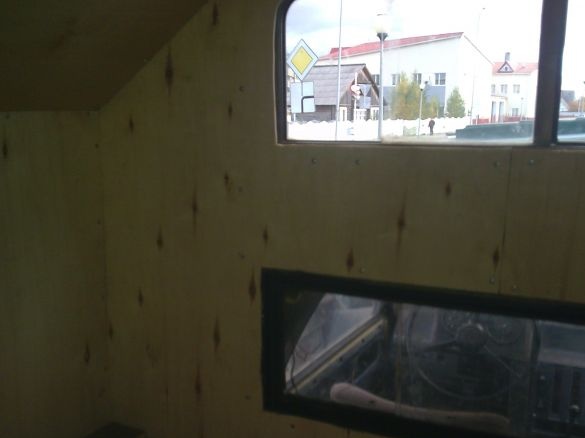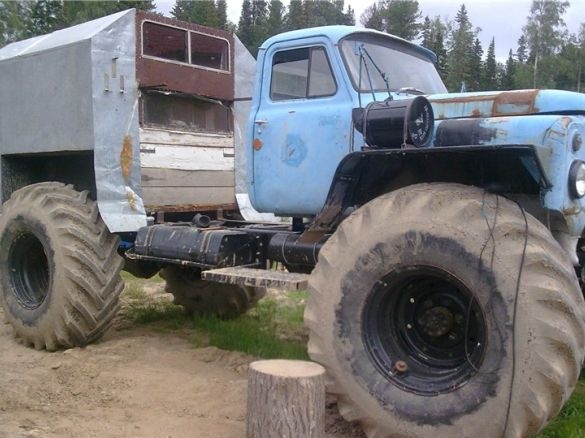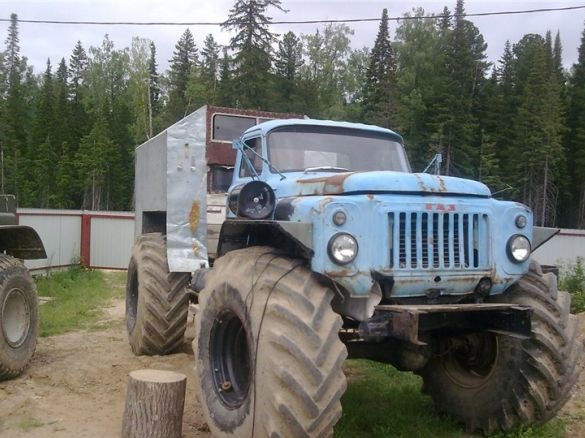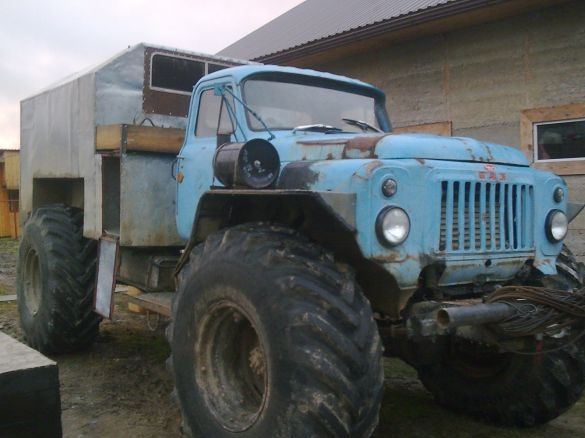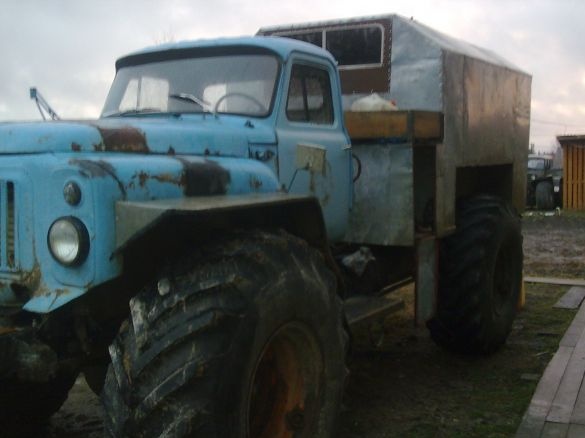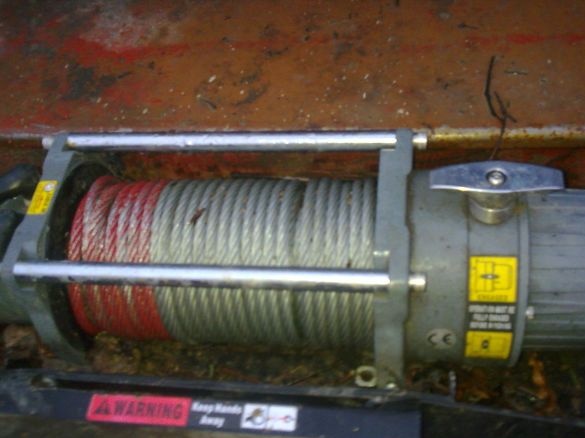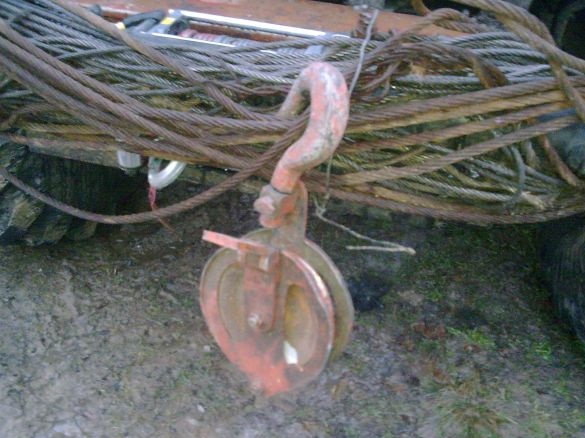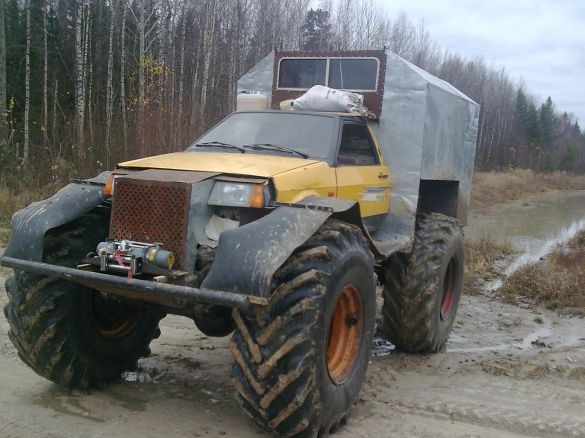Another interesting model all-terrain vehicle from the site . Originally all-terrain vehicle going on the basis of a car with bridges from gas-66, but then grew into a full-scale project of a heavy all-terrain vehicle. That is, in fact, the author remade one all-terrain vehicle he had assembled earlier into another. You can evaluate the quality and capabilities of this device by reading this article yourself.
The main mechanisms and components of structures:
1) Bridges from GAZ 66.
2) Wheels with disks from the tractor LT-157.
3) The frame is elongated, reinforced by UAZ 469.
4) A diesel engine 2 liters Nissan with a box (mechanics), which was subsequently replaced by D245.12S.
5) There is a second box from the GAZ 53.
6) Handout from GAZ 66.
7) At the first stage, the body cut off from the VAZ 2108 was used, then replaced with a cab from the ground.
8) Power steering from ZIL 131
The weight of the all-terrain vehicle in the first version turned out to be about two tons, then increased to four.

We will get acquainted with the main work on the nodes of the car, and so we will consider the stages of construction of an all-terrain vehicle.
Front axle
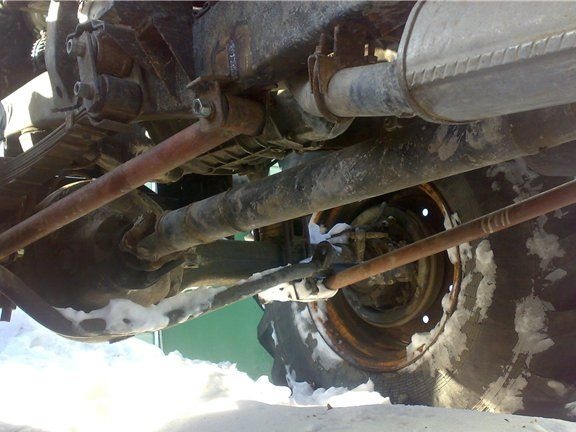
Driver's seat
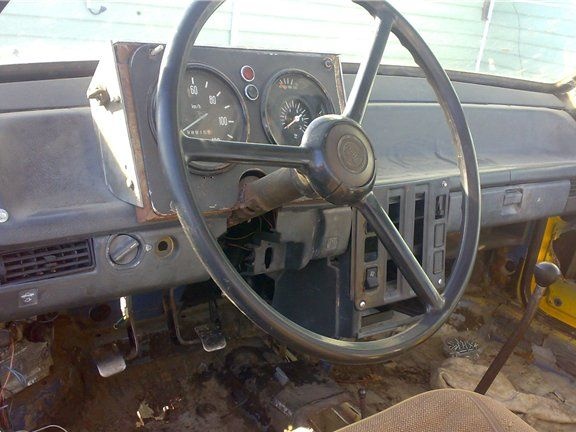
In the beginning, the author acquired the GAZ-66 frame. Removed all unnecessary from the frame.
Cut across the middle of the frame and lengthened.
The result is such a frame extended by 600 mm:
Then the author rolled under the frame the native springs from gas-66, bridges. The wheels were also disassembled, the author welded five bolts and nuts (from turning the tire when the camera was punctured) on the wheels on the tire seat on each side, painted the wheels, assembled and put them on the bridges:
Then the D-240 engine was purchased from the ‘BULL’ car and mounted on the frame.
The engine was mounted on rubber mounts. These are the pillows from the URAL petrol frame.
Regarding engine performance:
D245.12S power 108 hp at 2400 rpm, torque 353 Nm at 1300 - 1700 rpm, weight 473 kg. The engine is not bad, but there are survivals of the tractor past in the form of vibrations.
Jet rods are made of 40mm pipe. Salenbloks from the UAZ attachment springs. Bridges bent springs, so it was decided to install jet thrusts.
Here are spring replacement photos. The root was taken from UAZ, and everything else from gas-66 and a shock absorber from ZIL was installed.
stud mounting pins were installed.
The author installed a ZiL-157 transfer case. I had to redo the mount.
Then the rear propeller was installed.
And the front gimbal.
Mounting RK ZIL-157
Then the author put the Gaz-53 cabin.
the cabin is raised from the frame by 150mm.
A fuel tank from the Gas-71 was installed at about 80-90 liters.
Then the author put the hood and front frame with a radiator.It was decided to make a frame with a radiator and a diffuser along the fan. Because of this, the frame from the hood was moved 150mm forward.
The installation of the ZiL-131 steering column took several days.
several flaws were identified after the first tests.
When driving in deep snow, the gas-66 transfer case crashed two times, apparently in the future there will be problems with it, so the author decided to change it from 157.
Then the author began work on the kung and the interior of the car.
This material (Izalon) was insulated in the living compartment of the kung. Adhesive only to foam.
The kung frame itself is made of 5-6 mm tubing drill pipe wall thickness.
A stove was installed with which you can warm up the engine, and cook food.
A diesel-powered PLANAR heater was also installed in the passenger compartment for heating.
Construction The residential kung is nearing completion. PLANAR will heat this kung.
Then the author insulated the kung with ISALON and covered it with 6mm plywood.
Foam was pumped under the plywood through the holes with a mounting gun.
This heater was tested in practice and did not fail at all. The only thing he needs to do is to do maintenance on time (remove carbon deposits from the boiler, clean the nozzle, anoint the bearings on the fan engine) and no problems.
The author writes that during the operation of the PLANAR, the smell and rubber were felt for the first time, but approximately after the combustion of one tank of fuel the smells ceased.
These photographs show the arrangement of the living compartment. It was lined with plywood and linoleum.
Installed stove:
The windows are sliding in the cabin:
The author even made a side table:
The all-terrain vehicle turned out to be large:
The distance between the axles is 3000 mm. Rubber from the T-150 231 / 18-26 tractor. Wheel height 1.5 m
Here are photos of the finished all-terrain vehicle with an already inhabited kung and an installed filter from Bychka:
And also an electric traction winch 4.5 tons was installed:
The Nissan D-20 engine of the car was originally installed.
Here you can see photos from the old all-terrain vehicle cabin:
Video of an all-terrain vehicle with an old cabin:
The final form of an all-terrain vehicle:
The author of an all-terrain vehicle from Khanty-Mansi Autonomous Okrug Mezhdurechenskiy with the nickname Nikita.V on the site of the .

